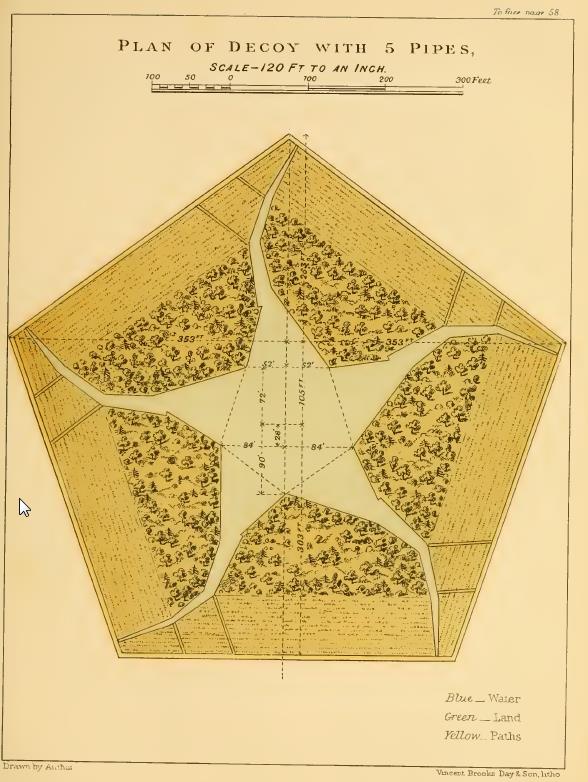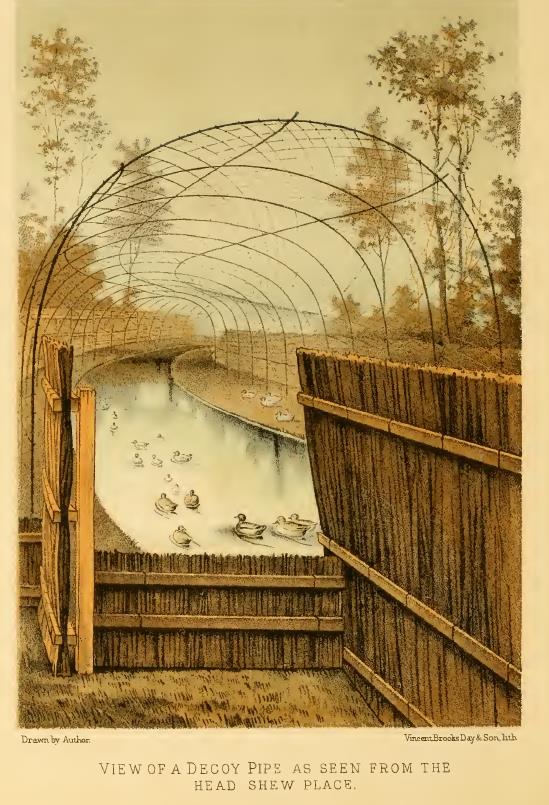One of the great advantages of living here is that you have not to walk far to reach the shores of the Wash and enjoy the richness of the wildlife that lives on and around it. It is always a delight to watch the flocks of knot as they dance by the waves or soar up to swoop and swirl in dizzying patterns. As summer comes to an end like most people here I wait to hear the first calls that announce the arrival of the pink-foot geese. Just a few fly over at first but as the months pass so the battalions grow until, as the light fades, hundreds and hundreds fly over our village to and from the coast. They are friends indeed. Redshank, greenshank, teal, widgeon, and mallard our coast is home to them all. When I first started looking back at our history I noticed on many maps the word decoy way down on our marshes. I soon found George Skelton, Decoy man, recorded in the census returns with his wife Mary and six children. On the tithe map of 1839 he is shown living far out on our marshes with a cottage and yard close to the decoy. I discovered from one source that a decoy was a trap to catch wild ducks. Tame ducks were used as decoys and were given food which would attract in the wild ones. At a given signal the tame ducks would swim up dykes covered in netting and the wild ducks would follow. Once in the dykes with no escape their fate was sealed. This was all I could discover and thought no more about it. However since working with Mike Strange on the new website things have changed. Mike is far more expert than I am with computers and the internet and he has uncovered a real gold nugget of information. So, with this new insight, walk with me now back 200 years into Dersingham's past and meet a real character, Old George Skelton and the fascinating world of the decoy man.
As the eastern counties have always been rich in wildfowl along their fens and marshes it is not surprising that the peasantry in the past sought to find the means to catch the birds for food and for sale. The original method was using many boats to drive the ducks into a cage of net closed at one end. As the ducks became more wary that changed into a method of enticing them into the nets. Decoys for catching ducks were first used in Lincolnshire and Essex when more experienced men from Holland came over to offer advice. This gives us the origin of the word decoy. It comes from the dutch "ende-kooy" the Duck Cage.
The art of decoying then spread into Northampton, Cambridge, Suffolk and Norfolk. In Norfolk the decoys consisted of very large lakes indeed with several net enclosed pipes. Huge numbers of boats and men were needed to drive the ducks into the nets so that the profit each man could achieve was small. This however was about to change.
A Mr. Huntingdon of Somerton had decided, in 1807 to form a decoy on the many acres of low overgrown Marshes he owned at Winterton so he needed to employ an experienced decoyman. Enter Old George Skelton Senior, the father of our George! He had recently moved, with his four sons George, William, Richard and Henry, from his home in Friskney, Lincolnshire to Norfolk. Now the Skeltons were very highly regarded in their home county but unknowns here in Norfolk. George Senior was duly employed and the local decoymen could not believe their ears when they heard he had said he only needed two and a half acres of marsh to construct his decoy. As work commenced the mockery grew louder and louder as the locals derided his "petty puddle". What could he hope to catch with such a paltry lake? It was ludicruous. Mr. Huntingdon had made a serious mistake in hiring this idiot. But Old George and all his sons were skilful decoy men and all the laughter turned to amazement. Humble pie had to eaten when it became known that George had taken 1,100 teal in 7 days. It is unsurprising that Old George's methods were soon adopted throughout the county and the Skelton's reputation was established. They were unrivalled in their knowledge and skill of the art of decoying. Old George Senior worked the Winterton Decoy until he died aged 80 in 1840. He is buried in Winterton churchyard. On his death his oldest son was then always alluded to as Old George. This is our man.





